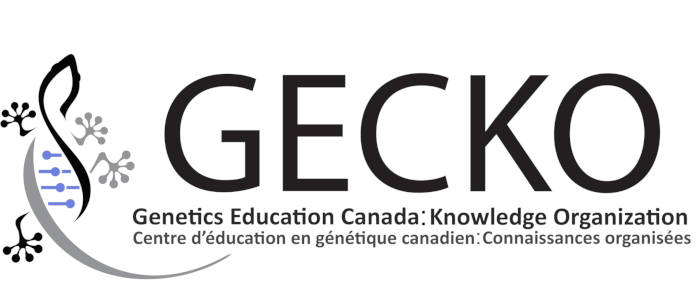Download the PDF here (Oct 2025)
| Bottom line: Bicuspid aortic valve is the most common congenital heart defect affecting about 1-2% of the general population. There is a high risk of associated complications such as, coarctation of the aorta, mitral valve prolapse, infective endocarditis and aortic dissection. BAV is often diagnosed by transthoracic echocardiogram (TTE) and this is considered the first-line imaging. BAV is demonstrated to run in families and follows an autosomal dominant pattern with reduced penetrance and variable expressivity. Despite the high heritability genetic testing is not routinely recommended at present. TTE is recommended for all first-degree relatives to assess for the presence of BAV and aortic dilation. About 5% of BAV will be observed with a syndromic association such as Turner syndrome or a connective tissue condition (e.g. Ehlers-Danlos syndrome, Marfan syndrome). If an affected individual’s personal and/or family history is suggestive of a syndromic etiology, consider referral to genetics. |
Related resource: See our point of care tool on Heritable Thoracic Aortic Disease for more on genetic red flags with regards to aortic disease.
Pathophysiology
BAV describes a range of valve structures that each exhibit 2-valve cusps or leaflets rather than the normal three.1,2 It falls in the spectrum of left-sided heart defects, also known as left ventricular outflow tract obstructive (LVOTO) defects.3 BAV and other LVOTO defects have high heritability (0.7-0.9).1-3
Over 50% of individuals with BAV will develop associated dilatation of the proximal ascending aorta1-3, which predisposes to aortic aneurysm and dissection. Altered hemodynamics, specific gene function or a combination of both, may contribute to aortopathy with BAV, and is an area of study and debate.4 Other complications of BAV include:5
- valve dysfunction (regurgitation or stenosis)
- mitral valve prolapse
- infective endocarditis
- aortic stenosis, which may occur earlier and require replacement earlier than AS associated with TAV
BAV confers an estimated 50% lifetime risk of requiring valve replacement.1,2 During childhood and adolescence about 12–15% of affected persons will require intervention, such as surgical valve repair.6
Diagnosis
Most of the time, BAV is incidentally identified when echocardiogram is undertaken for cardiac symptoms that may be unrelated to BAV (e.g. chest pain, dyspnea, heart murmur).7 Transthoracic echocardiography (TTE) is the first-line imaging for BAV diagnosis and phenotyping. Computed tomography (CT), angiography or cardiac magnetic resonance imaging (MRI) can be considered when TTE visualization is poor.8
Follow-up and management will depend upon imaging results, and personal and family history.
Genetics of BAV
BAV is inherited as an autosomal dominant with incomplete penetrance (not all those with a genetic variant in a BAV gene will have BAV) and variable expressivity (variability in presentation, from no complications to early aortic catastrophes.1,3,5
Although there is a growing understanding of BAV heritability, only a limited number of genes have been directly associated with its development.3 Routine genetic testing for BAV is not currently recommended.1
Isolated BAV
Most people with BAV do not have unusual features, but some have other congenital heart and vascular abnormalities with variable disease severity.6 Some genes that have been implicated in isolated BAV or BAV with thoracic aortic disease include NOTCH1, ACTA2, TGFB2, SMAD6, and GATA5, NKX2-5.2,3
Syndromic BAV
In about 5% of affected individuals, BAV is associated with a connective tissue condition such as Marfan syndrome, vascular Ehlers-Danlos syndrome or Loeys-Dietz syndrome (Kusner). About 30% of females with Turner syndrome (45,X) will have BAV.9 If an affected individual’s personal and/or family history is suggestive of a syndromic etiology, consider referral to genetics. See Figure 1 for associated connective tissue conditions, Turner syndrome and family history red flags.
Family screening
A key objective of cardiogenomics testing and diagnosis is screening of at-risk asymptomatic family members to help minimize morbidity and mortality.3
About 20% to 30% of individuals with a BAV have a family history of BAV and/or an associated aortopathy.8 Family members of an individual with BAV are at higher risk than the general population for aortic dilation, even when they have a tricuspid aortic valve (7% vs 25%).10
Because of the high heritability of BAV, the American College of Cardiology (ACC) and the American Heart Association (AHA) recommend that all first-degree relatives of the person with BAV undergo screening by TTE to detect the presence of BAV and thoracic aortic disease.1,6,8 If there is no evidence of BAV or aortic dilatation on TTE, no suggestion of family history of aortic aneurysm/dissection, no suggestive signs of a syndromic aortopathy then one time TTE is reasonable for FDRs. If two or more close relatives have evidence of an abnormality, then referral for genetic assessment could be considered.2 See our point of care tool on Heritable Thoracic Aortic Disease for more on genetic red flags with regards to aortic disease.
Pregnancy
During pregnancy, women with BAV, with or without significant aortic stenosis and/or dilated aortic roots, are at risk for complications.3 The American College of Cardiology (ACC) and the American Heart Association (AHA) recommend echocardiogram before and during pregnancy to monitor the ascending aorta size.8
References
- Kusner JJ, Brown JY, Gleason TG, Edelman ER. The Natural History of Bicuspid Aortic Valve Disease. Struct Heart. 2022 Dec 5;7(2):100119.
- Miller RL, Diamonstein CJ, Benheim A. The importance of genetics and genetic counselors in the evaluation of patients with bicuspid aortic valve and aortopathy. Curr Opin Cardiol. 2019 Jan;34(1):73-78.
- Freeze SL, Landis BJ, Ware SM, Helm BM. Bicuspid Aortic Valve: a Review with Recommendations for Genetic Counseling. J Genet Couns. 2016 Dec;25(6):1171-1178. doi: 10.1007/s10897-016-0002-6. Epub 2016 Aug 22.
- Verma R, Cohen G, Colbert J, Fedak PWM. Bicuspid aortic valve associated aortopathy: 2022 guideline update. Curr Opin Cardiol. 2023 Mar 1;38(2):61-67.
- Michelena HI, Corte AD, Evangelista A, Maleszewski JJ, et al. International Consensus Statement on Nomenclature and Classification of the Congenital Bicuspid Aortic Valve and Its Aortopathy, for Clinical, Surgical, Interventional and Research Purposes. Radiol Cardiothorac Imaging. 2021 Jul 22;3(4):e200496.
- Nappi F, Avtaar Singh SS, de Siena PM. Bicuspid Aortic Valve in Children and Young Adults for Cardiologists and Cardiac Surgeons: State-of-the-Art of Literature Review. J Cardiovasc Dev Dis. 2024 Oct 11;11(10):317.
- Chatrath N, Sharma S, Bhatia R, et al.11 The bicuspid aortic valve - how does it present? Heart 2023;109:A13-A14.
- Otto CM, Nishimura RA, Bonow RO, Carabello BA, et al. 2020 ACC/AHA Guideline for the Management of Patients With Valvular Heart Disease: Executive Summary: A Report of the American College of Cardiology/American Heart Association Joint Committee on Clinical Practice Guidelines. Circulation. 2021 Feb 2;143(5):e35-e71. doi: 10.1161/CIR.0000000000000932. Epub 2020 Dec 17. Erratum in: Circulation. 2021 Feb 2;143(5):e228.
- Sachdev V, Matura LA, Sidenko S, Ho VB, et al. Aortic valve disease in Turner syndrome. J Am Coll Cardiol. 2008 May 13;51(19):1904-9.
- Bray JJH, Freer R, Pitcher A, Kharbanda R. Family screening for bicuspid aortic valve and aortic dilatation: a meta-analysis. Eur Heart J. 2023 Sep 1;44(33):3152-3164. doi: 10.1093/eurheartj/ehad320.



